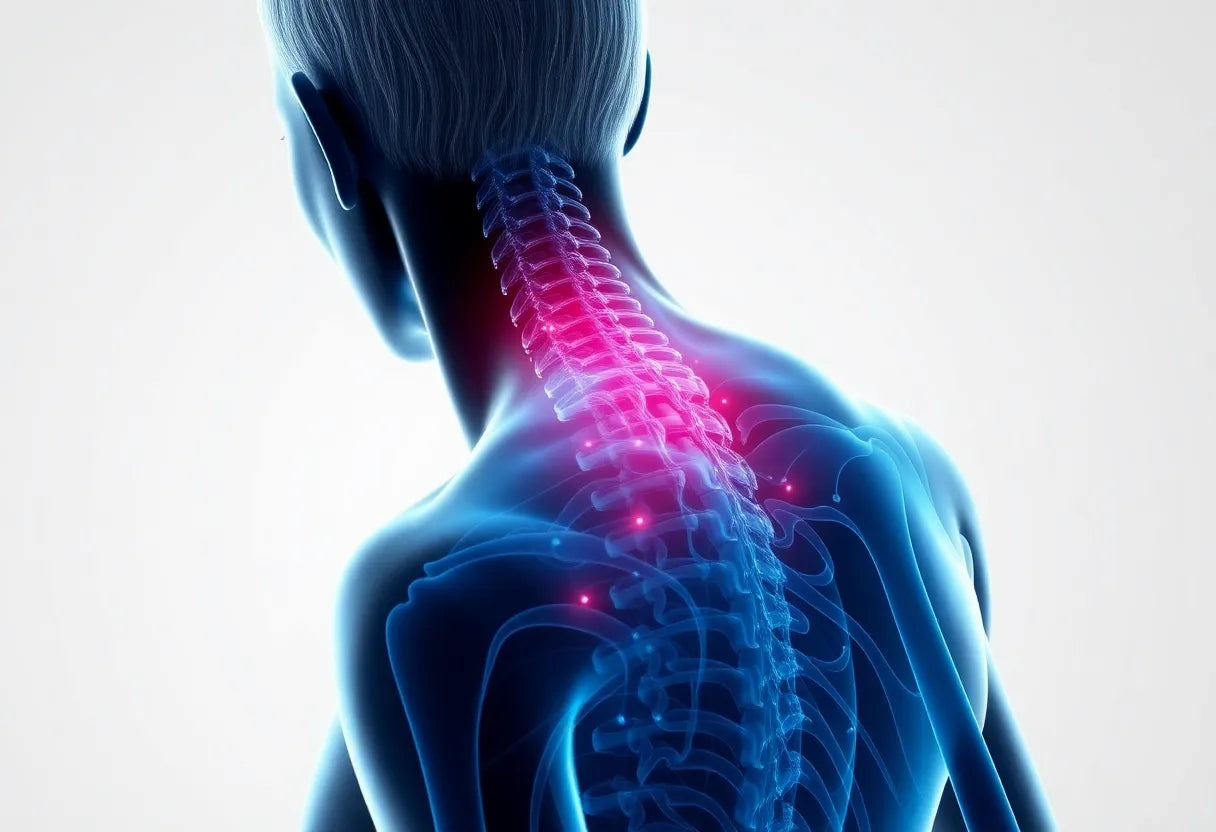The piriformis muscle, though small, plays a significant role in our daily movements and overall mobility. Nestled deep within the buttock region, this muscle is pivotal for hip rotation and stabilization. It works tirelessly to support our body during various activities, from walking and running to sitting and standing. However, when the piriformis muscle becomes tight or spasms, it can lead to a condition known as piriformis syndrome. This syndrome often results in the compression of the sciatic nerve, causing pain that can radiate from the lower back down through the legs, mimicking the discomfort associated with sciatica.
the importance of targeted piriformis exercises
Engaging in targeted exercises for the piriformis muscle can be a game-changer for those experiencing discomfort. These exercises are designed to alleviate pain, enhance flexibility, and prevent future issues by addressing the root cause of the problem. For individuals leading sedentary lifestyles, athletes aiming to boost their performance, or anyone grappling with lower back pain, incorporating specific piriformis exercises into their routine can lead to significant improvements in their quality of life.
By focusing on both stretching and strengthening the piriformis muscle, individuals can achieve a balance that promotes overall hip stability and muscle balance. Stretching exercises help reduce sciatic nerve compression, alleviating pain and improving flexibility. Meanwhile, strengthening exercises target not only the piriformis but also adjacent muscles like the gluteals, abductors, and rotators, which further enhance hip stability and reduce the likelihood of recurrence.
achieve pain-free movement with essential exercises
Unlocking pain-free movement is within reach through a combination of stretching and strengthening exercises specifically designed for the piriformis muscle. By incorporating these exercises into your fitness regimen, you can tackle the discomfort head-on and pave the way for a more active, pain-free lifestyle. Whether you're dealing with persistent lower back pain or simply looking to enhance your athletic performance, these exercises offer a practical solution to improve your overall mobility and well-being.
In the following sections, we'll delve deeper into the specific exercises that can help you achieve these goals, providing you with the tools you need to take control of your health and unlock a future of pain-free movement.
stretching and strengthening: unlocking the benefits
When it comes to addressing piriformis syndrome, a dual approach of stretching and strengthening is essential. Stretching exercises play a pivotal role in reducing sciatic nerve compression, which can alleviate pain and significantly improve flexibility. By elongating the piriformis and surrounding muscles, stretching helps to release tension and promote better range of motion. This is particularly beneficial for those who spend long hours sitting, as prolonged sitting can lead to muscle tightness and discomfort.

Lumbar support belt
Stabilizes and relieves lower back pain, perfect for those with sciatica or herniated discs.
On the other hand, strengthening exercises are crucial for enhancing hip stability and muscle balance. By focusing on the piriformis and adjunct muscles such as the gluteals, abductors, and rotators, strengthening exercises help to build a robust support system around the hip joint. This not only reduces the likelihood of piriformis syndrome recurrence but also contributes to overall better posture and alignment.
essential exercises for piriformis relief
Incorporating a variety of exercises into your routine can provide comprehensive relief from piriformis-related pain. Here are some effective exercises to consider:
stretching exercises
- Seated piriformis stretch: Sit with your legs extended in front of you. Cross one leg over the other, placing your foot flat on the ground. Gently pull the bent knee towards your opposite shoulder to feel a stretch in the buttock area.
- Supine piriformis stretch: Lie on your back with your knees bent. Cross one ankle over the opposite knee and gently pull the uncrossed leg towards your chest, feeling a stretch in the buttocks.
- Standing piriformis stretch: Stand with your feet hip-width apart. Cross one leg over the other knee, bending at the hips to lower into a squat position. Hold onto a support if needed for balance.
strengthening exercises
- Glute bridges: Lie on your back with knees bent and feet flat on the floor. Lift your hips towards the ceiling, squeezing your glutes at the top.
- Seated leg raises: Sit on the edge of a chair with one leg extended and the other foot flat on the floor. Lift the extended leg to engage the hip flexors and lower it back down.
- Resistance band walks: Place a resistance band around your ankles and take small sideways steps, keeping tension on the band to engage the abductors.
- Lunges: Step forward with one leg, lowering your hips until both knees are bent at a 90-degree angle. Push back to the starting position and repeat with the other leg.
- Planks: Hold a plank position on your forearms and toes, keeping your body in a straight line to engage the core and stabilize the hips.
- Bird dogs: Start on all fours, extending one arm and the opposite leg simultaneously, then switch sides to engage the core and improve balance.
customizing your exercise routine
While these exercises are effective, it's important to personalize your routine to suit your individual needs. Different stretching techniques, such as adductor and external rotator patterns, can offer similar benefits. Experiment with various methods to find what works best for you. Personalizing your routine ensures that you address your specific pain points and flexibility levels, leading to more effective and lasting results.
embracing a functional training approach
Incorporating functional training into your regimen can further enhance the benefits of piriformis exercises. By focusing on correcting movement patterns and strengthening hip extensors, abductors, and external rotators, functional training addresses the underlying biomechanical causes of piriformis syndrome. This approach not only aids in reducing sciatic nerve irritation but also promotes overall better movement efficiency and injury prevention.
In conclusion, by integrating a combination of stretching, strengthening, and functional training exercises, you can effectively manage and alleviate piriformis-related pain. This comprehensive approach not only targets the symptoms but also addresses the root causes, paving the way for pain-free movement and improved quality of life.
special considerations for desk workers
For desk workers, prolonged sitting can exacerbate piriformis tightness, leading to discomfort and sciatic symptoms. This is due to the sustained pressure and lack of movement, which can cause the piriformis muscle to become tense. To counteract these effects, it's crucial to incorporate regular stretching into your daily routine. Simple stretches, such as the seated piriformis stretch, can be performed right at your desk. Additionally, standing up and walking around every hour can help alleviate pressure on the piriformis and improve circulation, ultimately maintaining productivity and comfort throughout the workday.

ActivePosture® Shirt for men
Discreet shirt with built-in support for better posture during daily activities.
exploring adjunct therapy alternatives
While piriformis exercises are effective, adjunct therapies can complement your routine. Manual therapy, such as myofascial release, can help release tension in the piriformis muscle and surrounding tissues. Soft tissue mobilization techniques, often used by physiotherapists, can further enhance flexibility and reduce pain. Clinical trials have shown the efficacy of these methods in controlled settings, providing additional relief for those struggling with persistent symptoms. Instrument-assisted mobilization is another option, using specialized tools to target deep tissue layers, promoting healing and reducing muscle tightness.
concluding thoughts
The journey to pain-free movement involves a balanced approach that combines stretching, strengthening, and functional training. By addressing both the symptoms and underlying causes of piriformis syndrome, you can achieve lasting relief and improved mobility. Incorporating these exercises into your routine, alongside adjunct therapies if needed, empowers you to take control of your health and enjoy a more active, comfortable lifestyle.
frequently asked questions
What are the symptoms of piriformis syndrome?
Symptoms include pain in the buttocks, lower back, and down the leg, often mimicking sciatic nerve pain.
How often should I perform piriformis exercises?
Aim for a routine of 3-4 times a week, adjusting frequency based on personal comfort and progress.
Can these exercises be done at home?
Yes, most piriformis exercises can be performed at home with minimal equipment, making them accessible for everyone.
Are there any risks associated with piriformis exercises?
While generally safe, improper form or overexertion can lead to strain. It is advisable to consult a healthcare professional before starting any new exercise regimen.
How long does it take to see results?
Results can vary, but many individuals notice improvements in flexibility and pain reduction within a few weeks of consistent practice.
Kilder
- Boyajian-O'Neill, L. A., et al. (2008). "Piriformis Syndrome: A Narrative Review." PM&R.
- Clinical Trial: Muscle Energy Technique and Stretching Exercise in Working Pregnant Women with Piriformis Syndrome.
- Kim, S. Y., et al. (2023). "Effectiveness of Exercise Programs for Piriformis Syndrome: A Systematic Review." Journal of Exercise Rehabilitation.
- Cleveland Clinic. "Piriformis Syndrome: Stretches & Exercises."
- Hopayian, K., et al. (2010). "The Clinical Features of the Piriformis Syndrome: A Systematic Review." Journal of Orthopaedic & Sports Physical Therapy.
- Medical News Today. "How to Stretch the Piriformis Muscle."
- Gupta, P., et al. (2020). "Effectiveness of Different Exercises on Piriformis Syndrome: A Comparative Study." International Journal of Physiotherapy and Occupational Therapy.
- YouTube. "Piriformis Syndrome Exercises & Stretches."
- Khan, A. A., et al. (2017). "Management of Piriformis Syndrome: A Review." Journal of Pioneering Medical Sciences.
- ClinicalTrials.gov. "Study NCT04842656: Effects of Exercise on Piriformis Syndrome."
- ClinicalTrials.gov. "Study NCT05660005: Rehabilitation Strategies for Piriformis Syndrome."
- Lee, J. H., et al. (2018). "The Effect of Stretching and Strengthening Exercises on Piriformis Syndrome." Journal of Korean Exercise Rehabilitation.


















